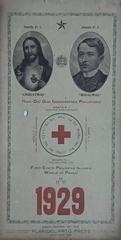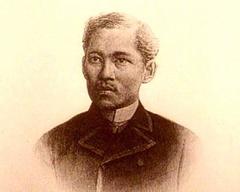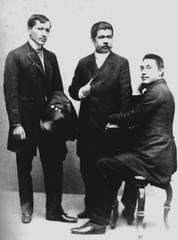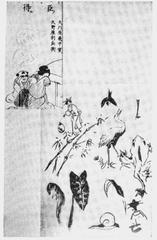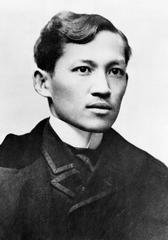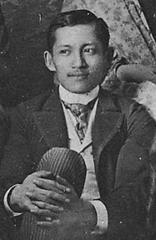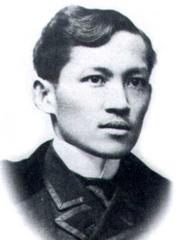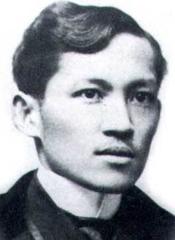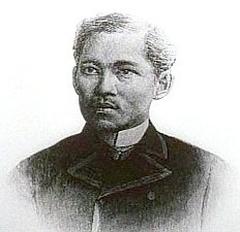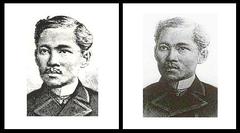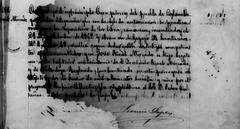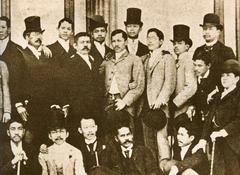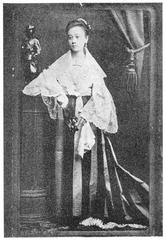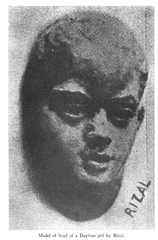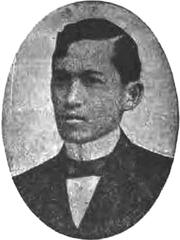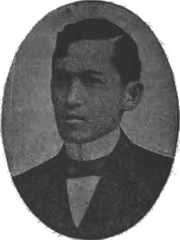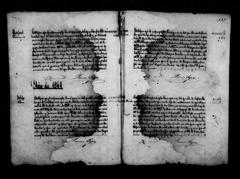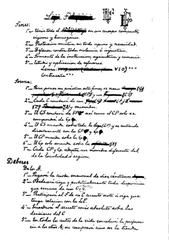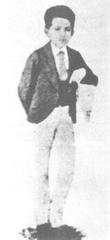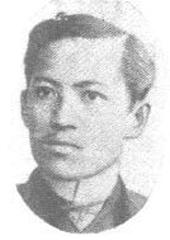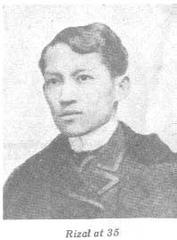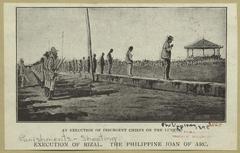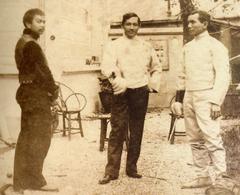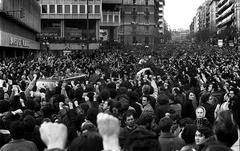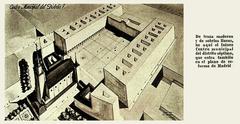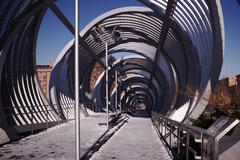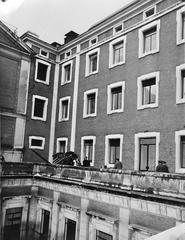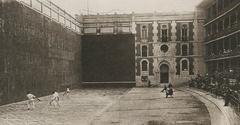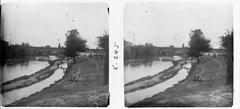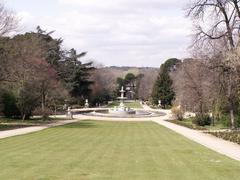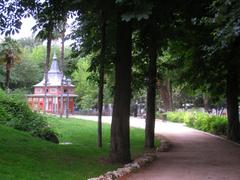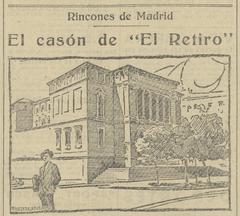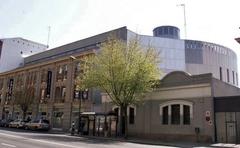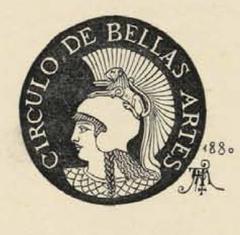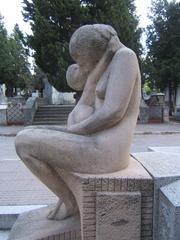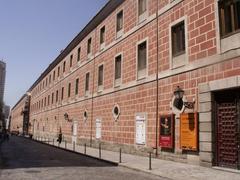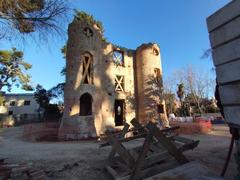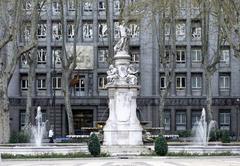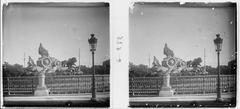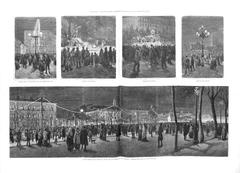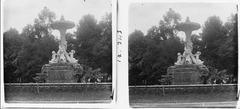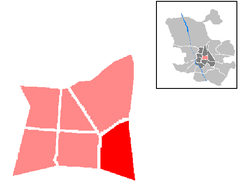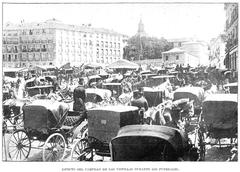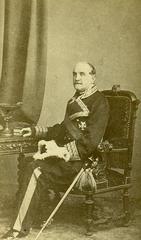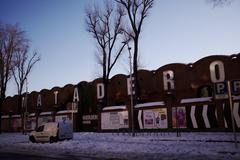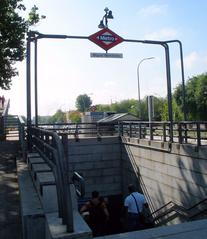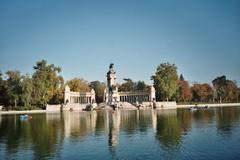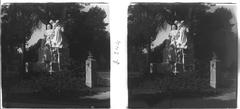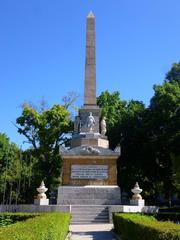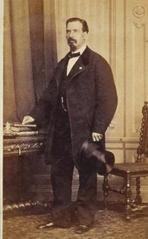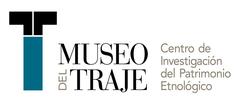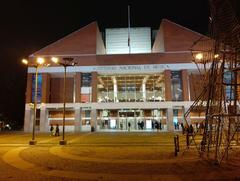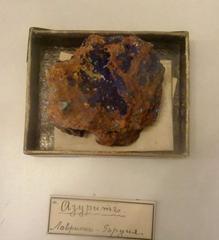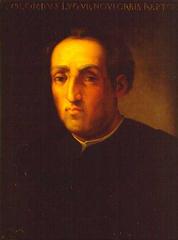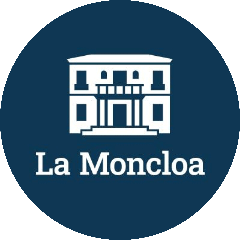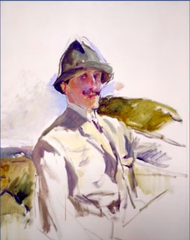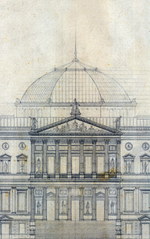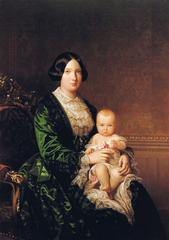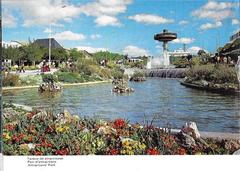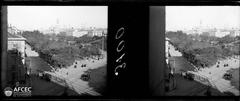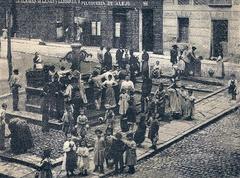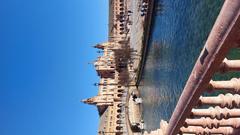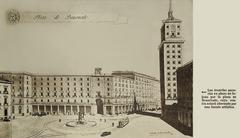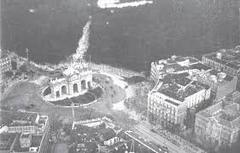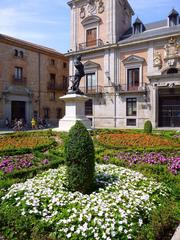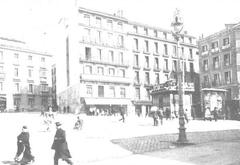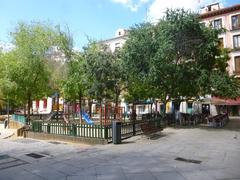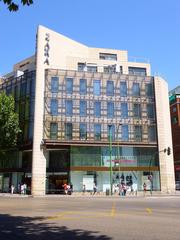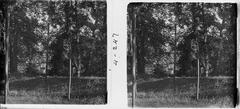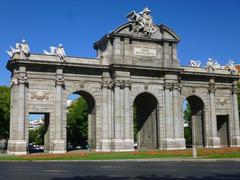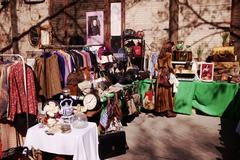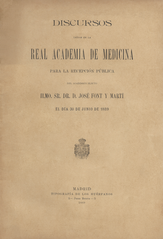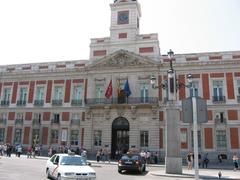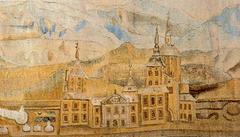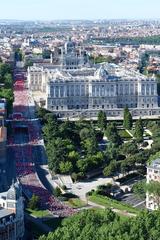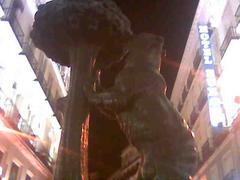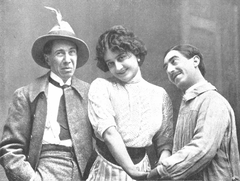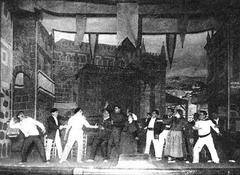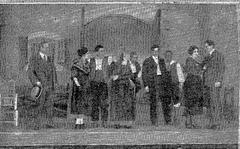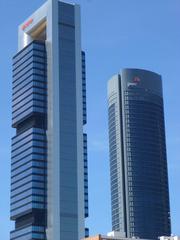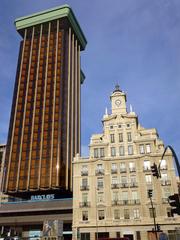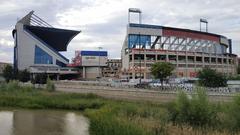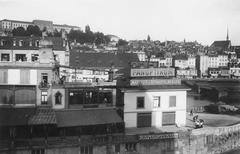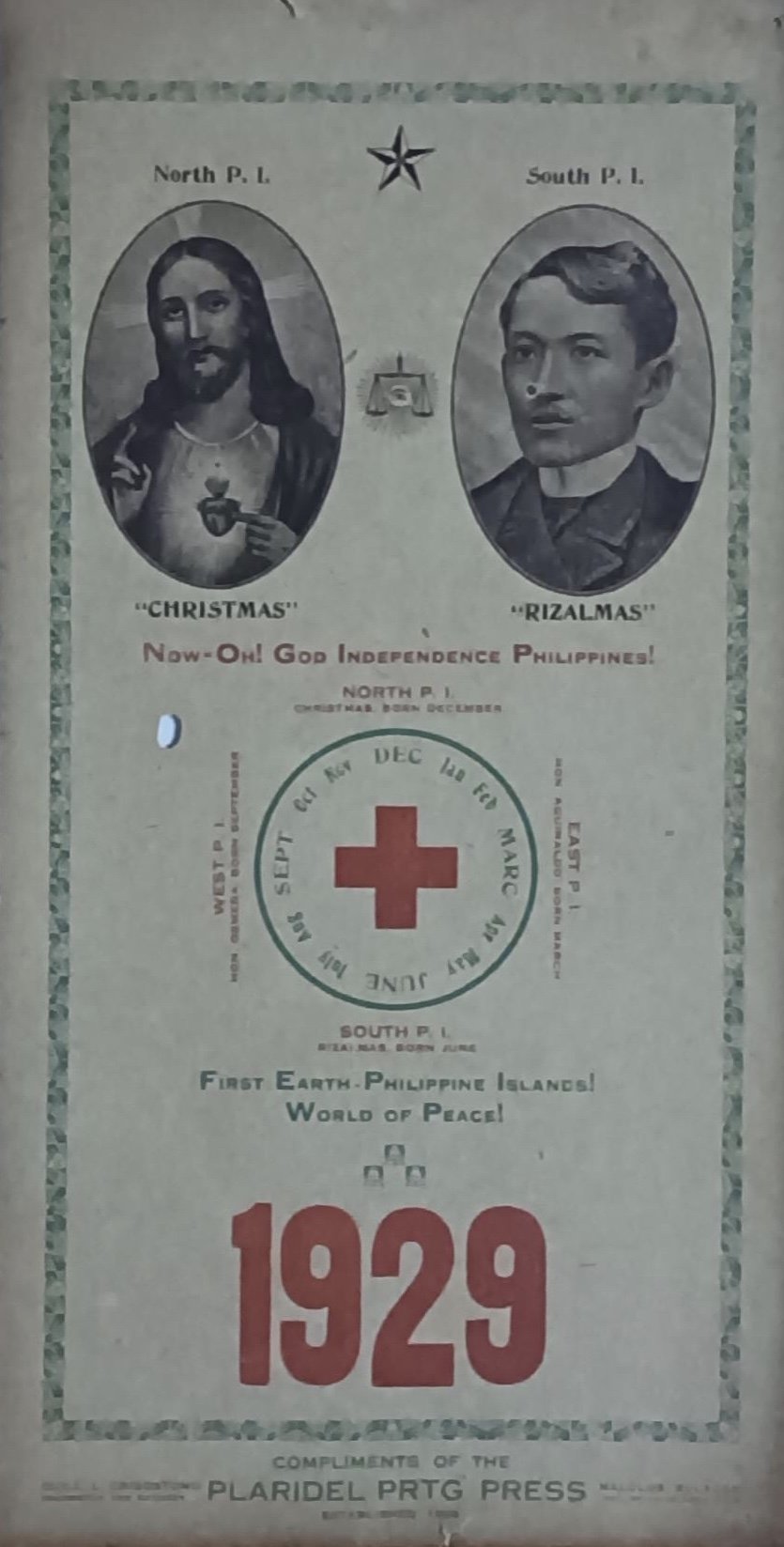
Visiting Hours, Tickets, and Historical Sites in Madrid: Your Guide to Rizal
Date: 19/07/2024
Introduction
Nestled in the heart of Madrid, the district of Rizal is a captivating blend of rich history, cultural heritage, and modern attractions. From its roots as an ancient Roman settlement to its role in the Spanish Civil War and beyond, Rizal offers visitors a unique glimpse into the evolution of Madrid over the centuries. This guide is designed to provide an in-depth look at the district’s historical landmarks, architectural marvels, and must-visit attractions, along with practical information on visiting hours, ticket prices, and travel tips. Whether you’re a history enthusiast, a cultural explorer, or a casual traveler, Rizal has something to offer everyone.
Table of Contents
- Introduction
- Exploring Rizal, Madrid
- Exploring the Monument to José Rizal and Historical Landmarks in Madrid, Spain
- Ultimate Visitor Tips for Exploring Rizal, Madrid
- Conclusion
- FAQ
Exploring Rizal, Madrid - A Historical Journey Through Time, Tickets, and Visiting Hours
History of Rizal, Madrid, Spain
Early Beginnings
Rizal, a district in Madrid, Spain, has a rich and multifaceted history that dates back to ancient times. The area was originally inhabited by the Carpetani, an ancient Iberian tribe, before the Roman conquest of the Iberian Peninsula. The Romans established a settlement in the region, which later became part of the Roman province of Hispania. The remnants of Roman architecture and infrastructure, such as roads and aqueducts, can still be found in the surrounding areas, providing a glimpse into the district’s early history.
Medieval Period
During the medieval period, Rizal was influenced by the Visigoths, who ruled the Iberian Peninsula after the fall of the Roman Empire. The Visigothic influence is evident in the architectural styles and religious practices of the time. In the 8th century, the Moors conquered the region, bringing with them Islamic culture, architecture, and advancements in science and agriculture. The Moorish influence is still visible in the district’s architecture, particularly in the design of buildings and the layout of streets.
The Reconquista
The Reconquista, a series of campaigns by Christian states to recapture territory from the Moors, significantly impacted Rizal. By the late 15th century, the Catholic Monarchs Ferdinand and Isabella successfully reclaimed the region. This period saw the construction of numerous churches and monasteries, many of which still stand today. The Church of San Pedro, built in the 16th century, is a notable example of the religious architecture from this era.
The Habsburg and Bourbon Dynasties
The Habsburg dynasty, which ruled Spain from the 16th to the 18th centuries, left a lasting legacy in Rizal. The district saw the construction of several palaces and public buildings, reflecting the grandeur and opulence of the Habsburg era. The Bourbon dynasty, which succeeded the Habsburgs, continued to develop the area, focusing on modernization and urban planning. The influence of these dynasties is evident in the district’s architectural styles, which blend Renaissance, Baroque, and Neoclassical elements.
19th Century - Industrialization and Modernization
The 19th century was a period of significant change for Rizal, marked by industrialization and modernization. The construction of railways and factories transformed the district into an industrial hub, attracting workers from across Spain. This period also saw the development of new residential areas to accommodate the growing population. The introduction of modern amenities, such as electricity and running water, improved the quality of life for residents.
20th Century - Civil War and Reconstruction
The Spanish Civil War (1936-1939) had a profound impact on Rizal, as it did on the rest of Spain. The district witnessed significant destruction and loss of life during the conflict. After the war, the Franco regime undertook extensive reconstruction efforts to rebuild the damaged infrastructure and restore normalcy. The post-war period also saw the development of new public spaces, such as parks and plazas, to promote community engagement and social cohesion.
Visiting Rizal - Practical Information
Visiting Hours and Tickets
Many historical sites in Rizal are open to the public, but visiting hours can vary. For example, the Church of San Pedro is typically open from 10:00 AM to 6:00 PM, while the Palacio de los Duques de Osuna has similar hours. It is advisable to check the official websites for the most up-to-date information. Ticket prices also vary, with some sites offering free entry and others requiring a small fee, usually ranging from €5 to €10.
Travel Tips
Rizal is easily accessible by public transport, with several metro and bus lines serving the area. For those driving, parking facilities are available but may be limited during peak times. Comfortable walking shoes are recommended, as many historical sites are best explored on foot.
Nearby Attractions
While in Rizal, visitors can also explore nearby attractions such as the Museo de Historia de Madrid, which offers a comprehensive overview of the city’s history. The Plaza de España is another must-see, offering a beautiful public space and historical significance.
Cultural Significance
Rizal’s rich history is reflected in its cultural heritage, which includes a blend of Roman, Visigothic, Moorish, and Christian influences. The district is home to several museums and cultural institutions that showcase its historical and artistic legacy.
Architectural Highlights
Rizal boasts a diverse architectural landscape, with buildings that reflect various historical periods and styles. The Church of San Pedro is a prime example of Renaissance architecture, while the Palacio de los Duques de Osuna showcases Baroque and Neoclassical elements. Modern architectural marvels, such as the Torre de Madrid, highlight the district’s ongoing evolution and development.
Historical Landmarks
Several historical landmarks in Rizal offer insights into the district’s past. The Puerta de Alcalá, a neoclassical monument, serves as a symbol of Madrid’s rich history and cultural heritage. The Plaza de España, a major public square, is another significant landmark that reflects the district’s historical and cultural significance.
Preservation Efforts
Efforts to preserve Rizal’s historical heritage have been ongoing, with several initiatives aimed at protecting and restoring historical buildings and sites. The Madrid City Council has implemented various programs to promote the conservation of cultural landmarks and enhance public awareness of the district’s historical significance.
Exploring the Monument to José Rizal and Historical Landmarks in Madrid, Spain
Historical Landmarks
Monument to José Rizal
The Monument to José Rizal is a significant landmark in Madrid, dedicated to the Filipino nationalist and revolutionary, José Rizal. Located in the Parque de Santander, this monument commemorates Rizal’s contributions to the fight for Philippine independence from Spanish colonial rule. The statue, unveiled in 1996, is a popular spot for both locals and tourists, especially those from the Philippines, who come to pay homage to their national hero. The monument is a testament to the historical ties between Spain and the Philippines and serves as a reminder of the enduring legacy of Rizal’s work. (Parque de Santander website)
Visitor Information
- Visiting Hours: The monument is accessible during park opening hours, typically from 6:00 AM to 10:00 PM daily.
- Tickets: No tickets are required to visit the monument.
- Special Events: Occasionally, cultural events and commemorations are held at the monument. Check the Parque de Santander website for updates.
Ateneo de Madrid
The Ateneo de Madrid is a cultural institution that played a crucial role in Rizal’s life during his stay in Spain. Founded in 1835, the Ateneo is a hub for intellectual and cultural activities, hosting lectures, exhibitions, and literary events. Rizal was an active member of this institution, where he engaged with other intellectuals and furthered his studies. Visitors can explore the Ateneo’s rich history and its connection to Rizal, making it a must-visit for those interested in the historical and cultural context of his time in Madrid. More information can be found on their official website.
Cultural Attractions
Museo del Prado
The Museo del Prado is one of the most renowned art museums in the world, housing an extensive collection of European art from the 12th to the early 20th century. During his time in Madrid, Rizal frequented the Prado to study the works of great masters such as Velázquez, Goya, and El Greco. The museum’s vast collection provides insight into the artistic influences that shaped Rizal’s own creative endeavors. Visitors can explore the museum’s galleries and view masterpieces that Rizal himself admired. For more details, visit the Museo del Prado website.
Biblioteca Nacional de España
The Biblioteca Nacional de España (National Library of Spain) is another significant cultural institution that Rizal visited during his stay in Madrid. Established in 1712, the library houses an extensive collection of books, manuscripts, and historical documents. Rizal spent considerable time here conducting research for his writings and studies. Today, visitors can explore the library’s exhibitions and collections, gaining a deeper understanding of the resources that were available to Rizal. More information can be found on the library’s official website.
Educational Institutions
Universidad Central de Madrid
Now known as the Complutense University of Madrid, the Universidad Central de Madrid was where Rizal pursued his medical studies. Founded in 1293, the university is one of the oldest and most prestigious institutions in Spain. Rizal’s time at the university was instrumental in shaping his intellectual and professional development. Visitors can explore the university’s historic campus and learn about its rich academic heritage. For more details, visit the Complutense University of Madrid website.
Residencia de Estudiantes
The Residencia de Estudiantes is a cultural center that has hosted numerous prominent figures, including poets, artists, and intellectuals. Although Rizal did not stay here, the Residencia offers a glimpse into the vibrant intellectual life of Madrid during his time. The center hosts exhibitions, lectures, and cultural events, providing visitors with an opportunity to engage with the city’s rich cultural history. More information can be found on the Residencia de Estudiantes website.
Parks and Recreational Areas
Parque del Retiro
Parque del Retiro, or El Retiro Park, is one of Madrid’s largest and most popular parks. During his time in Madrid, Rizal often visited El Retiro to relax and reflect. The park features beautiful gardens, sculptures, and monuments, including the iconic Crystal Palace. Visitors can enjoy a leisurely stroll, rent a boat on the park’s lake, or simply relax in the serene surroundings. For more details, visit the Parque del Retiro website.
Parque de Santander
Parque de Santander is another significant green space in Madrid, where the Monument to José Rizal is located. The park offers a peaceful environment for visitors to relax and enjoy outdoor activities. It features walking paths, sports facilities, and beautiful landscaping. The presence of Rizal’s monument adds a historical and cultural dimension to the park, making it a meaningful destination for those interested in Rizal’s legacy.
Dining and Shopping
Calle de la Cava Baja
Calle de la Cava Baja is a vibrant street in the La Latina neighborhood, known for its lively atmosphere and excellent dining options. The street is lined with traditional Spanish taverns, tapas bars, and restaurants, offering a taste of authentic Spanish cuisine. Visitors can enjoy a variety of dishes, from classic tapas to more elaborate meals, while soaking in the lively ambiance of this historic street.
Mercado de San Miguel
Mercado de San Miguel is a historic market located near Plaza Mayor, offering a wide range of gourmet food and drink options. The market is housed in a beautiful iron structure dating back to 1916 and features stalls selling fresh produce, seafood, meats, cheeses, and more. Visitors can sample a variety of Spanish delicacies, including jamón ibérico, paella, and churros, making it a must-visit destination for food lovers. For more details, visit the Mercado de San Miguel website.
Practical Information
Transportation
Madrid’s public transportation system is efficient and well-connected, making it easy for visitors to explore the city. The Metro de Madrid is the fastest way to get around, with numerous lines covering the city’s major attractions. Buses and taxis are also readily available. For those preferring to walk, many of the attractions related to Rizal are within walking distance of each other, particularly in the central areas of the city.
Accommodation
Madrid offers a wide range of accommodation options to suit all budgets, from luxury hotels to budget-friendly hostels. Staying in the city center, particularly in neighborhoods like Sol, Gran Vía, and La Latina, provides easy access to the attractions related to Rizal. Booking in advance is recommended, especially during peak tourist seasons.
Ultimate Visitor Tips for Exploring Rizal, Madrid
Best Time to Visit
Rizal, a charming neighborhood in Madrid, offers a unique experience throughout the year. However, the best time to visit is during the spring (March to May) and fall (September to November) when the weather is mild and pleasant. During these seasons, temperatures range from 15°C to 25°C (59°F to 77°F), making it ideal for outdoor activities and sightseeing. Summer months (June to August) can be quite hot, with temperatures often exceeding 30°C (86°F), while winter (December to February) is cooler, with temperatures ranging from 5°C to 15°C (41°F to 59°F).
Getting There
By Metro
The nearest metro station is “Rizal,” which is on Line 1 (Blue Line). The metro system in Madrid is efficient and affordable, making it a convenient option for tourists.
By Bus
Several bus lines serve the Rizal area, including lines 34, 35, and 36. Buses are a great way to explore the city and its neighborhoods.
By Taxi
Taxis are readily available throughout Madrid. A ride from the city center to Rizal typically costs around €10-€15, depending on traffic.
By Bicycle
Madrid has a bike-sharing program called BiciMAD, which allows tourists to rent bicycles and explore the city at their own pace. There are several docking stations near Rizal.
Accommodation
Hotels
There are several mid-range and budget hotels in and around Rizal. Some popular options include Hotel Madrid Centro and Ibis Madrid Centro.
Hostels
For budget travelers, hostels like The Hat Madrid and Sungate ONE offer affordable and comfortable stays.
Vacation Rentals
Platforms like Airbnb and Vrbo have numerous listings in Rizal, ranging from cozy apartments to spacious homes.
Local Cuisine
Tapas Bars
Madrid is famous for its tapas, and Rizal has several excellent tapas bars. Try La Casa del Abuelo for their famous garlic shrimp or El Sur for a variety of delicious tapas.
Traditional Restaurants
For a taste of traditional Spanish cuisine, visit Casa Lucio, known for its huevos rotos (broken eggs), or Botín, the oldest restaurant in the world, famous for its roast suckling pig.
Markets
Mercado de San Miguel is a popular food market where you can sample a variety of Spanish delicacies, from jamón ibéricoto fresh seafood.
Cultural Etiquette
Understanding local customs and etiquette can enhance your experience in Rizal:
- Greetings: Spaniards typically greet each other with a handshake or a kiss on both cheeks. When meeting someone for the first time, a handshake is appropriate.
- Dining: It is customary to say “buen provecho” (enjoy your meal) before starting to eat. Tipping is not mandatory but appreciated; rounding up the bill or leaving a small tip (5-10%) is common.
- Language: While many people in Madrid speak English, learning a few basic Spanish phrases can be helpful and appreciated by locals. Common phrases include “hola” (hello), “gracias” (thank you), and “por favor” (please).
Safety Tips
Rizal is generally a safe neighborhood, but it’s always wise to take precautions:
- Pickpocketing: Like any major city, Madrid has its share of pickpockets, especially in crowded areas. Keep your belongings secure and be aware of your surroundings.
- Emergency Numbers: In case of an emergency, dial 112 for police, fire, or medical assistance.
- Local Laws: Familiarize yourself with local laws and regulations. For example, smoking is prohibited in indoor public spaces, and drinking alcohol in public places is not allowed.
Sightseeing and Activities
Rizal offers a variety of attractions and activities for visitors:
Parks and Gardens
Enjoy a leisurely stroll in Parque del Oeste, a beautiful park with lush greenery, fountains, and the Temple of Debod, an ancient Egyptian temple.
Museums
Visit the Museo del Prado, one of the most renowned art museums in the world, featuring works by Goya, Velázquez, and El Greco. The nearby Museo Reina Sofía houses contemporary art, including pieces by Picasso and Dalí.
Shopping
Explore the local shops and boutiques in Rizal for unique souvenirs and gifts. The nearby Gran Vía is a bustling shopping street with a wide range of stores, from high-end fashion to popular retail chains.
Transportation Within Rizal
Getting around Rizal is easy and convenient:
Walking
Rizal is a walkable neighborhood with many attractions within a short distance. Walking is a great way to explore the area and discover hidden gems.
Public Transport
The metro and bus systems are efficient and affordable. A single metro ticket costs €1.50-€2, while a 10-trip ticket (valid on both metro and buses) costs around €12.20.
Taxis and Ride-Sharing
Taxis are readily available, and ride-sharing services like Uber and Cabify operate in Madrid.
Local Events and Festivals
Rizal hosts several events and festivals throughout the year:
San Isidro Festival
Celebrated in May, this festival honors Madrid’s patron saint, San Isidro. The festivities include parades, concerts, and traditional dances.
Madrid Pride
One of the largest LGBTQ+ events in Europe, Madrid Pride takes place in late June to early July, featuring a vibrant parade, parties, and cultural activities.
Christmas Markets
During the holiday season, Madrid’s Christmas markets, such as the one in Plaza Mayor, offer festive decorations, gifts, and delicious treats.
Visitor Information - Hours and Tickets
- Museo del Prado: Open Monday to Saturday from 10 AM to 8 PM, and Sundays from 10 AM to 7 PM. General admission €15.
- Museo Reina Sofía: Open Monday to Saturday from 10 AM to 9 PM, and Sundays from 10 AM to 2:30 PM. General admission €10.
- Temple of Debod: Open Tuesday to Sunday from 10 AM to 8 PM. Admission is free.
Guided Tours and Photographic Spots
- Guided Tours: Consider booking a guided tour to gain deeper insights into the history and culture of Rizal and Madrid. Many tours are available, including walking tours, bike tours, and food tours.
- Photographic Spots: Capture stunning photos at landmarks like the Temple of Debod, Gran Vía, and the beautiful parks and gardens.
FAQ
Q: What are the visiting hours for the major attractions in Rizal?
- Museo del Prado: Open Monday to Saturday from 10 AM to 8 PM, and Sundays from 10 AM to 7 PM.
- Museo Reina Sofía: Open Monday to Saturday from 10 AM to 9 PM, and Sundays from 10 AM to 2:30 PM.
- Temple of Debod: Open Tuesday to Sunday from 10 AM to 8 PM.
Q: How much do tickets cost for these attractions?
- Museo del Prado: General admission €15.
- Museo Reina Sofía: General admission €10.
- Temple of Debod: Admission is free.
Q: Is Rizal a safe neighborhood to visit?
- Yes, Rizal is generally a safe neighborhood, but it’s always wise to take precautions against pickpocketing in crowded areas.
Q: Are there any special events or festivals in Rizal?
- Yes, Rizal hosts several events and festivals throughout the year, including the San Isidro Festival in May, Madrid Pride in late June to early July, and Christmas Markets during the holiday season.
Conclusion
Rizal, Madrid, is a district that seamlessly weaves together the threads of history, culture, and modernity. From ancient Roman foundations to the bustling streets of today, Rizal offers a captivating journey through time. Visitors can immerse themselves in the district’s multifaceted history by exploring historical landmarks such as the Church of San Pedro, the Palacio de los Duques de Osuna, and the Monument to José Rizal. Each site provides a unique window into the diverse influences that have shaped Rizal over the centuries.
The district’s architectural highlights reflect a rich tapestry of styles, including Roman, Visigothic, Moorish, Renaissance, Baroque, and Neoclassical elements. These architectural gems, along with modern attractions like the Torre de Madrid, showcase Rizal’s ongoing evolution and development. Efforts to preserve the district’s historical heritage, led by initiatives from the Madrid City Council, ensure that future generations can continue to appreciate its cultural significance. (Madrid City Council)
For those tracing the footsteps of José Rizal, exploring the Monument to José Rizal, the Ateneo de Madrid, and the Universidad Central de Madrid offers a profound connection to the Filipino national hero’s legacy. The cultural attractions and educational institutions that Rizal frequented provide a deeper understanding of his intellectual pursuits and contributions to the Philippine independence movement.
Rizal’s vibrant cultural scene is complemented by its culinary delights, with a variety of tapas bars, traditional restaurants, and bustling markets offering a taste of authentic Spanish cuisine. Visitors can also enjoy the district’s parks and recreational areas, where they can relax and reflect amidst beautiful surroundings.
By following the practical tips and recommendations provided in this guide, travelers can make the most of their visit to Rizal, Madrid. Whether exploring historical sites, enjoying local cuisine, or participating in cultural events and festivals, Rizal offers a memorable and enriching experience for all. For more updates and travel tips, download the Audiala mobile app, check out other related posts, or follow us on social media.
References
- Title, year, Author Parque de Santander website
- Title, year, Author Madrid City Council
